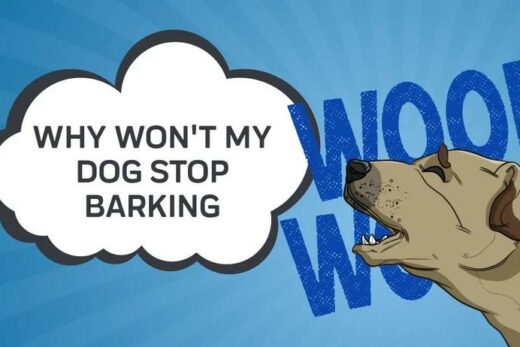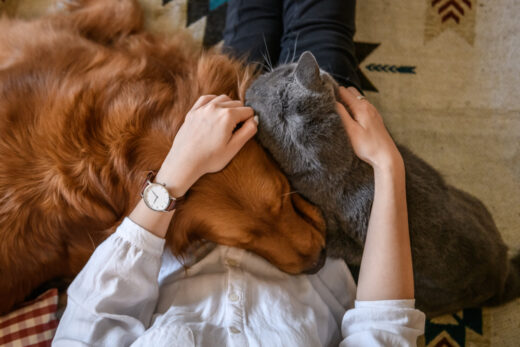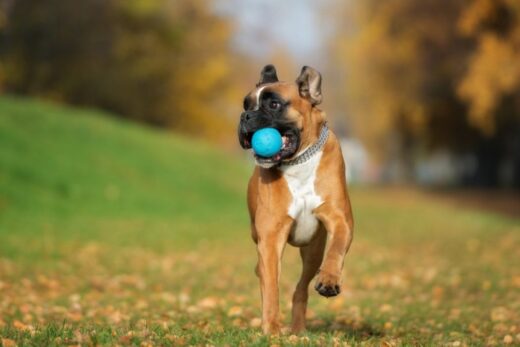Is your dog scared of thunder? While it may seem overly dramatic to some folks, it is in fact a real phobia – and according to experts, should not be taken lightly. Unfortunately, if nothing is done to remediate the behavioral problems associated with a dog’s storm phobia, it will not only continue, but most likely worsen over time. So what’s a pet parent to do when their pooch is crouched in the corner during a massive thunderstorm? Read on for helpful tips and guidelines and learn how to transform fear-stricken pups into confident canines.
Your Dog’s Thunderstorm Phobias: Understanding The Triggers
While dog experts may not know the exact triggers that set a dog’s storm phobias off, research has shown that it’s actually a combination of things, including (of course) thunder, lightning, wind, static electricity, low-frequency sounds following a storm that are inaudible to humans, and even changes in the barometric pressure. Considering all of the variables, it’s literally the ‘perfect storm’ (so to speak) to get an anxious dog worked up! There are even some theories that dogs may experience uncomfortable electric shocks from the static build-up before a thunderstorm. In fact, it is estimated that 15% to 30% of dogs suffer from some form of storm-related anxiety. And while there are some pooches with storm phobias who are also easily scared by other loud noises (such as fireworks), there are others who are only afraid of storms.
Based on various studies, here are some other reasons dogs may develop thunder phobias:
- Breed: According to research by Tufts University, some herding breeds (e.g., Border Collies) may have a genetic predisposition to thunder phobia.
- Behavior: Dogs who display other types of fear-based behaviors (such as separation anxiety) seem more inclined to panic during thunderstorms.
- Gender, Age & History: Studies have also shown that age, sex and acquisition of the dog may also impact the likelihood that a dog will suffer from this condition. Furthermore, it should be noted that female dogs and neutered males are more prone to this phobia, as well as dogs that have been rehomed.
- Personality: Believe it or not, a dog’s personality has been linked to his inclination towards storm phobias. For example, anxious or fearful pups who startle easily and/or lack confidence are more prone to develop a fear of thunder than well-socialized, confident dogs.
- Medical Conditions: For dog parents observing phobic behavior in their pet, it’s important to rule out any possible medical issues – conditions such as canine arthritis, blindness, hypothyroid disease and Addison’s disease can affect a dog’s stress levels and overall behavior.
 No matter what the case, one thing is for certain: if a dog shows anxious behavior during a thunderstorm, chances are these scenarios will only increase throughout the season as the storms become more frequent. Since most dogs won’t outgrow this behavior on their own, it’s crucial for pet parents to help pups acclimate to thunderstorms and break the cycle of phobic behavior.
No matter what the case, one thing is for certain: if a dog shows anxious behavior during a thunderstorm, chances are these scenarios will only increase throughout the season as the storms become more frequent. Since most dogs won’t outgrow this behavior on their own, it’s crucial for pet parents to help pups acclimate to thunderstorms and break the cycle of phobic behavior.
Some general signs that a dog is suffering from thunderstorm phobia may include:
- Pacing incessantly
- Panting, drooling or slobbering
- Shaking and trembling
- Whining or barking
- Hiding
- Becoming clingy
- Scratching or digging at windows or doors
- Chewing on paws or tail; chewing other objects in the home (walls, carpets etc.)
- Urinating and/or defecating indoors
- Visible signs of panic, anxiety or fear
- Destructive or panicked to the point of damaging surroundings and/or injuring himself
If one or more of these symptoms is observed, chances are the dog in question has a phobia of thunder and lightning storms. However, there are a number of different approaches to reduce his stress levels during storm season while providing coping skills so that he can get through a thunderstorm when he’s home alone.
How To Reduce Thunderstorm Anxiety In Canines: Top Ten Tips
Even though pet owners can’t control the weather, they can take a proactive stance when it comes to reducing their pet’s thunder-related anxiety. Below, some useful tips that can help anxious dogs (and their concerned parents) cope with thunderstorms:





